1. Axolotl: The Cute but Powerful Regeneration Expert
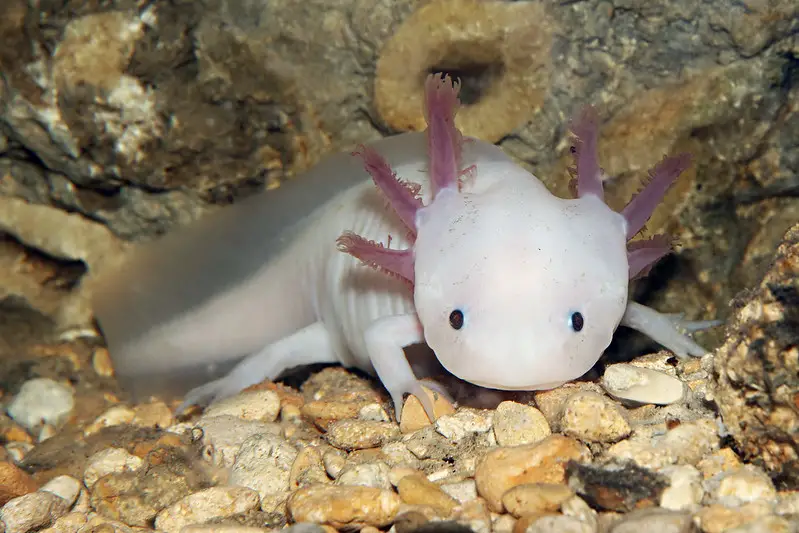
The axolotl is one of the strangest yet most adorable amphibians in the world, often recognized for its wide, almost cartoonish smile and frilly external gills. Unlike most salamanders, axolotls never undergo full metamorphosis, meaning they remain in their larval stage for life, giving them a permanently youthful, almost alien-like appearance. Their translucent pinkish skin, tiny limbs, and external gill stalks make them look like something out of a fantasy movie rather than a real creature. However, behind their unusual appearance lies an incredible scientific ability—axolotls can regenerate entire body parts, including limbs, spinal cords, and even parts of their hearts and brains, according to the World Economic Forum. This unique trait makes them a focal point for medical research, as scientists hope to unlock their secrets to aid human tissue regeneration.
Beyond their medical potential, axolotls play an important ecological role in their native habitat, the freshwater lakes of Mexico. As apex predators in their environment, they help control insect populations, particularly mosquitoes, which can carry deadly diseases. Their presence also indicates the overall health of their habitat, as they are highly sensitive to pollution and environmental changes. Unfortunately, due to habitat destruction and pollution, wild axolotl populations have declined drastically, making them critically endangered. However, conservation efforts and breeding programs are helping to ensure that these fascinating creatures continue to thrive—not just in laboratories but in the wild as well.
2. Star-Nosed Mole: The Underground Super Sniffer
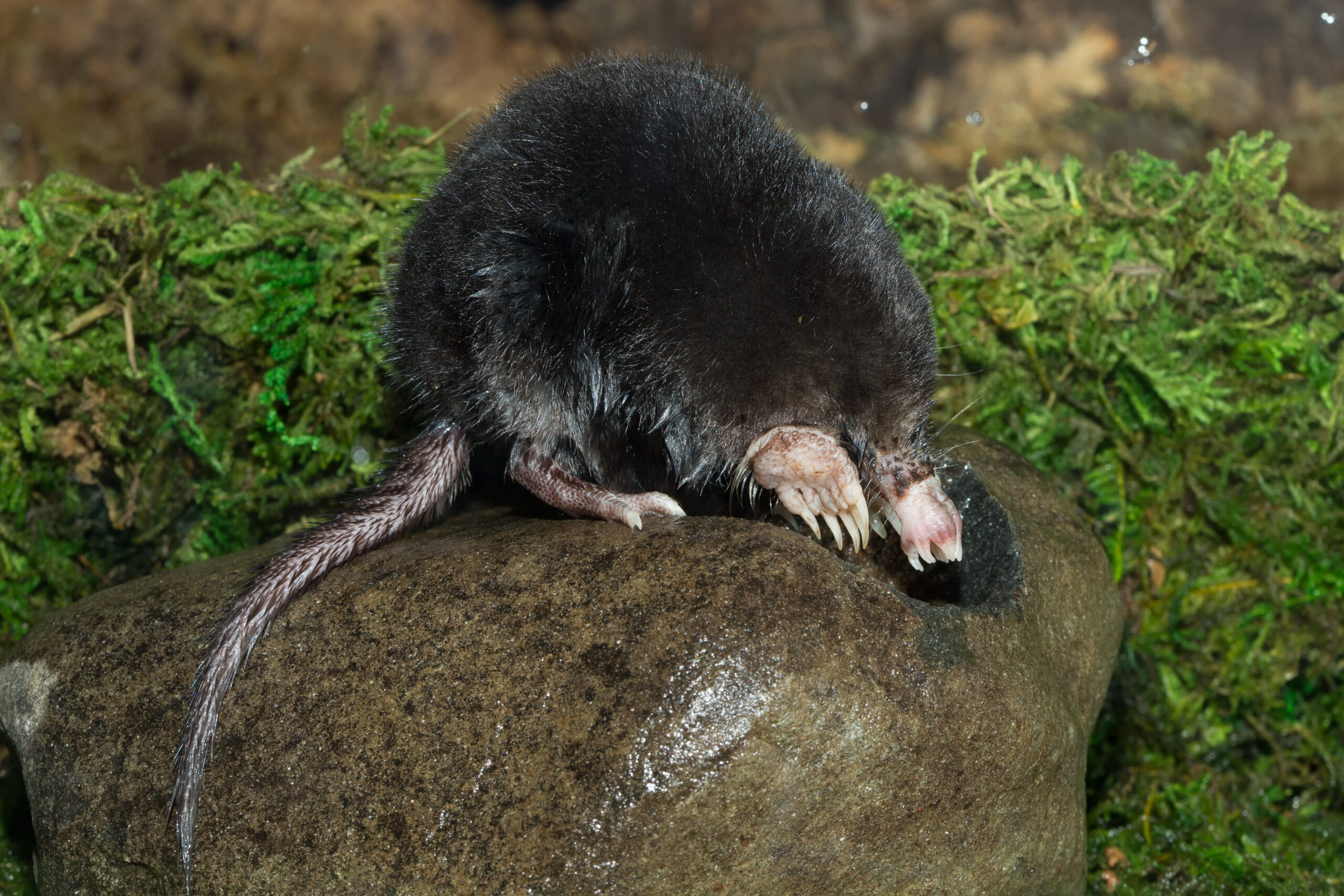
At first glance, the star-nosed mole looks like something out of a nightmare, with its fleshy, pink tentacle-like nose that resembles an alien growth. This bizarre feature is made up of 22 tiny appendages, which are covered in over 100,000 specialized nerve endings, making it the most sensitive touch organ in the animal kingdom. Despite its unsettling appearance, this strange nose allows the star-nosed mole to navigate underground with incredible precision, identifying food in a fraction of a second—faster than any other known mammal. While most moles rely on their claws to dig and their noses to sniff out prey, this species’ unique adaptation allows it to survive in muddy, waterlogged environments where other moles would struggle.
Beyond its remarkable speed, the star-nosed mole serves a crucial role in wetland ecosystems, as it helps regulate insect populations by feeding on worms, larvae, and aquatic invertebrates. It also aerates the soil as it tunnels, improving the environment for plant roots and other underground creatures. Additionally, its ability to survive in waterlogged habitats makes it a bioindicator species, meaning that its presence (or absence) helps scientists determine the overall health of wetland environments. While its strange looks might make it seem like a freak of nature, the star-nosed mole is actually a highly specialized creature that plays an essential role in maintaining the balance of its ecosystem.
3. Blobfish: The Deep-Sea Survivor That Keeps the Ocean Clean
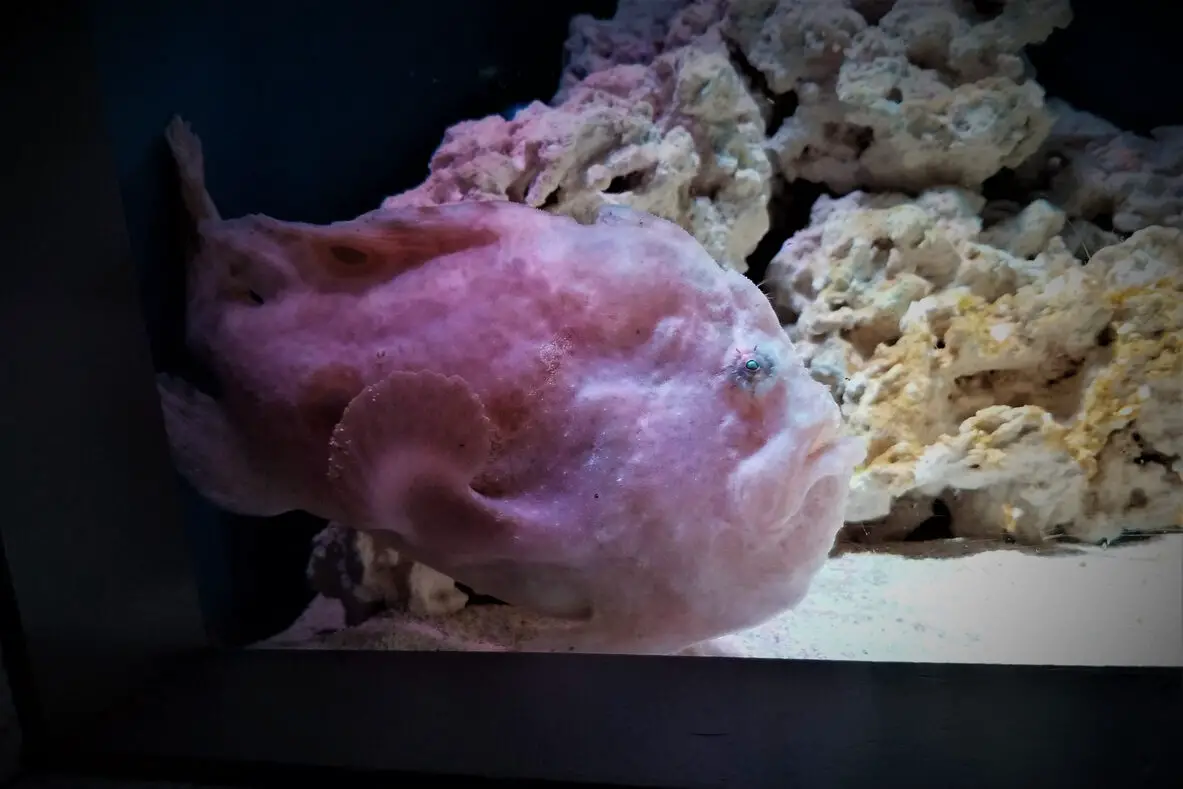
The blobfish is often considered the “ugliest animal in the world,” thanks to its saggy, gelatinous body and sad-looking face, according to Earth. It looks like a melting, grumpy lump of flesh, especially when pulled out of the water. However, the blobfish only looks this way because it lives at extreme depths, where the water pressure is immense. Unlike most fish, it lacks a swim bladder, which helps other fish control buoyancy because such an organ would collapse under deep-sea pressure. Instead, its gelatinous body allows it to float just above the ocean floor without expending energy, making it an efficient deep-sea scavenger.
While its strange, droopy face makes it the butt of many jokes, the blobfish actually serves an important role in the ocean ecosystem. It primarily feeds on carrion and other organic debris that sinks to the ocean floor, essentially acting as a deep-sea cleaner. Without creatures like the blobfish, the ocean floor would be overwhelmed with decaying matter, disrupting the balance of marine life. Even though it is rarely seen by humans, the blobfish is a key player in maintaining the health of deep-sea ecosystems, proving that beauty isn’t everything when it comes to ecological importance.
4. Naked Mole-Rat: The Almost Immortal, Cancer-Resistant Underground Engineer
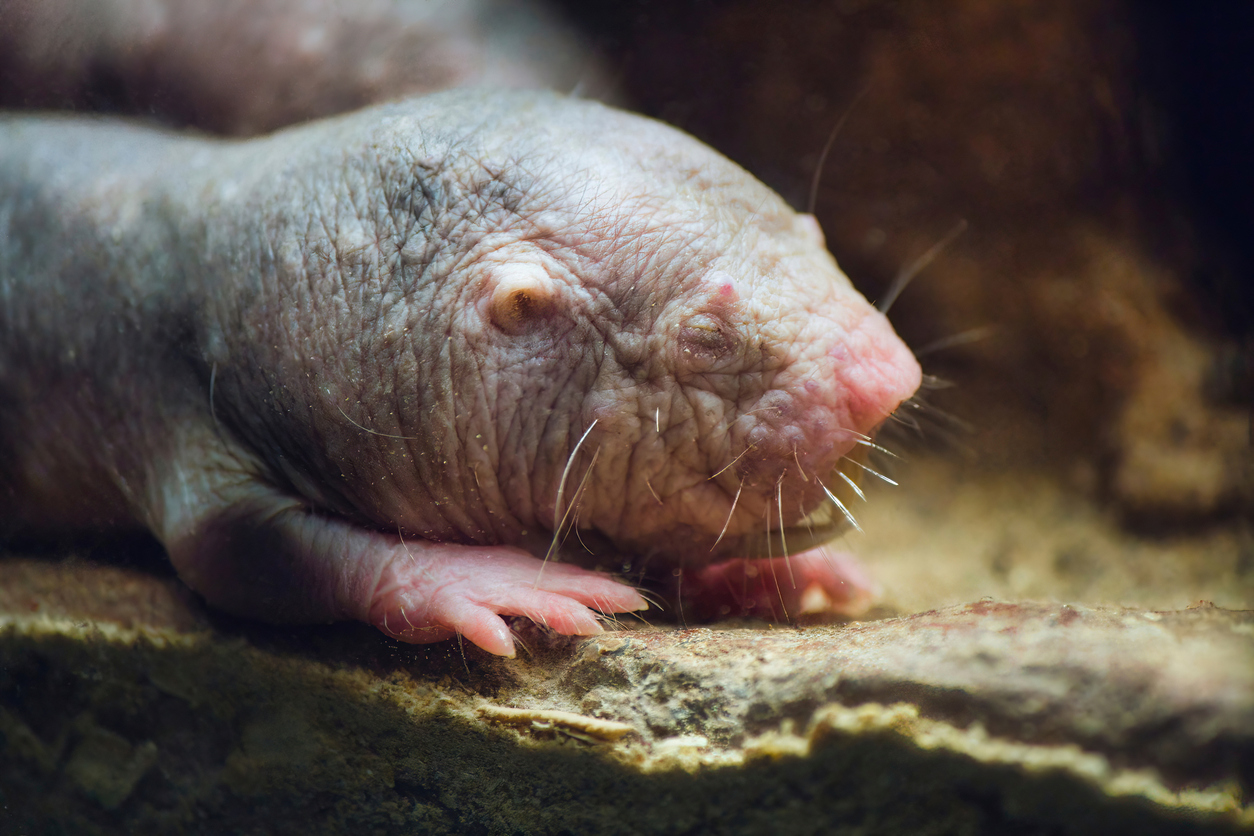
With its wrinkled, hairless body, oversized teeth, and nearly blind eyes, the naked mole-rat looks like a creature that nature forgot to finish designing. But what it lacks in appearance, it makes up for with some of the most extraordinary survival abilities of any mammal, according to PubMed Central. These rodents are practically immune to cancer, as their cells produce a unique sugar molecule that prevents tumors from forming. They can survive up to 18 minutes without oxygen, making them one of the most resilient animals in low-oxygen environments. They also have an exceptionally long lifespan—up to 30 years, far outliving other rodents of their size.
Beyond their biological marvels, naked mole-rats play a critical role in their underground ecosystem. They are burrowing specialists, constantly digging tunnels that aerate the soil and improve plant growth. Their colonies function like insect hives, with a single queen controlling a caste system of workers and soldiers. Because they mostly eat underground tubers and roots, they help disperse plant seeds, contributing to the health of their environment. Despite their odd appearance, these nearly indestructible creatures hold clues to cancer resistance, aging, and even how mammals might survive in extreme conditions—making them as important to science as they are to their ecosystem.
5. Aye-Aye: The Creepy Fingered Forest Guardian
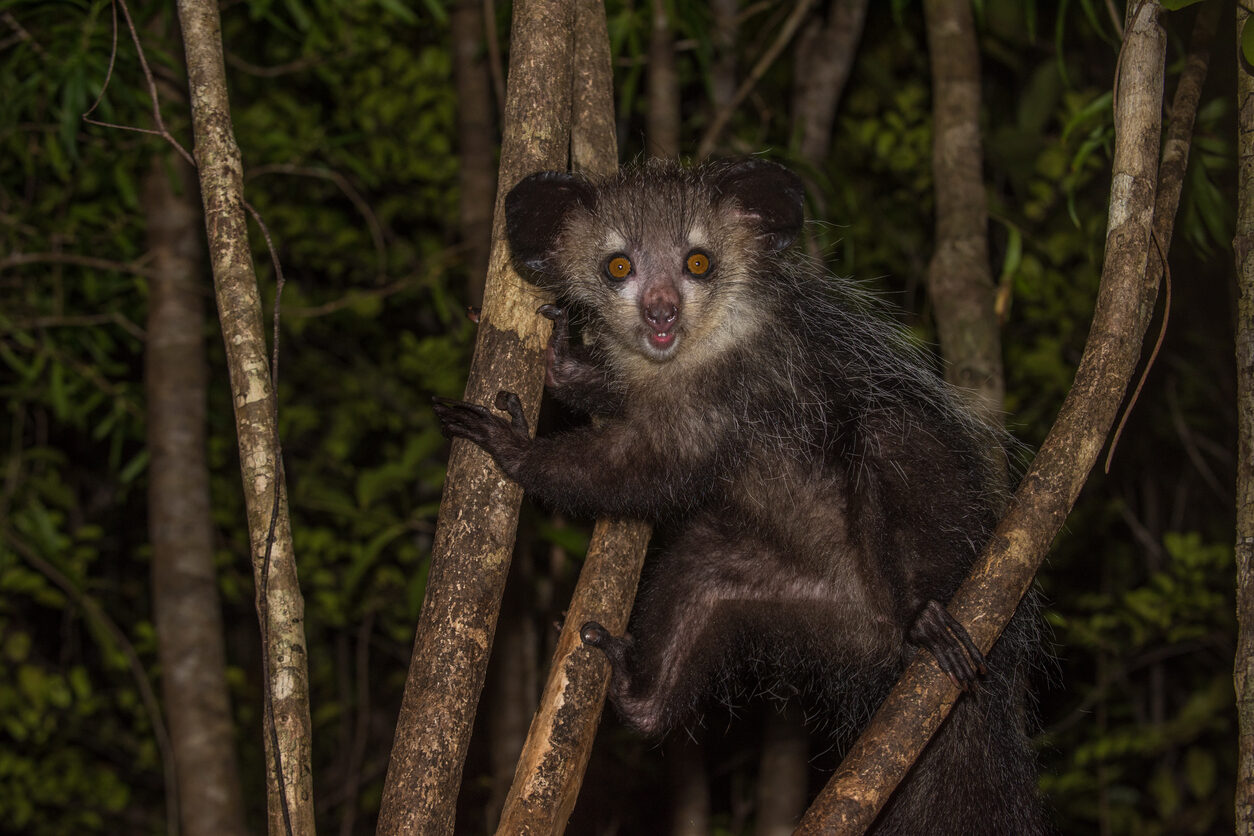
With its wide, staring eyes, bushy tail, and long, skeletal fingers, the aye-aye looks like a mix between a goblin and a lemur. Found only in Madagascar, this nocturnal primate has an elongated middle finger that it uses to tap on trees to locate insects hiding beneath the bark. It then gnaws through the wood with its rodent-like teeth and extracts its prey using its specialized finger, much like a woodpecker does with its beak. This eerie-looking hunting technique, combined with its piercing stare, has led to many local myths, with some believing that the aye-aye brings bad luck. Unfortunately, these superstitions have led to the hunting and killing of aye-ayes, further endangering their population.
Despite its reputation, the aye-aye plays a crucial role in its ecosystem. As one of Madagascar’s most important insect hunters, it helps keep insect populations in check, preventing them from overconsuming trees and crops. By foraging for grubs beneath tree bark, it also aids in the natural pruning process, ensuring the health of the trees. Additionally, the aye-aye helps disperse seeds and maintain the biodiversity of its forest home. Without it, Madagascar’s fragile ecosystem would suffer, proving that even the most bizarre creatures have a vital role in nature.
6. Saiga Antelope: The Prehistoric Survivor with a Built-In Air Filter
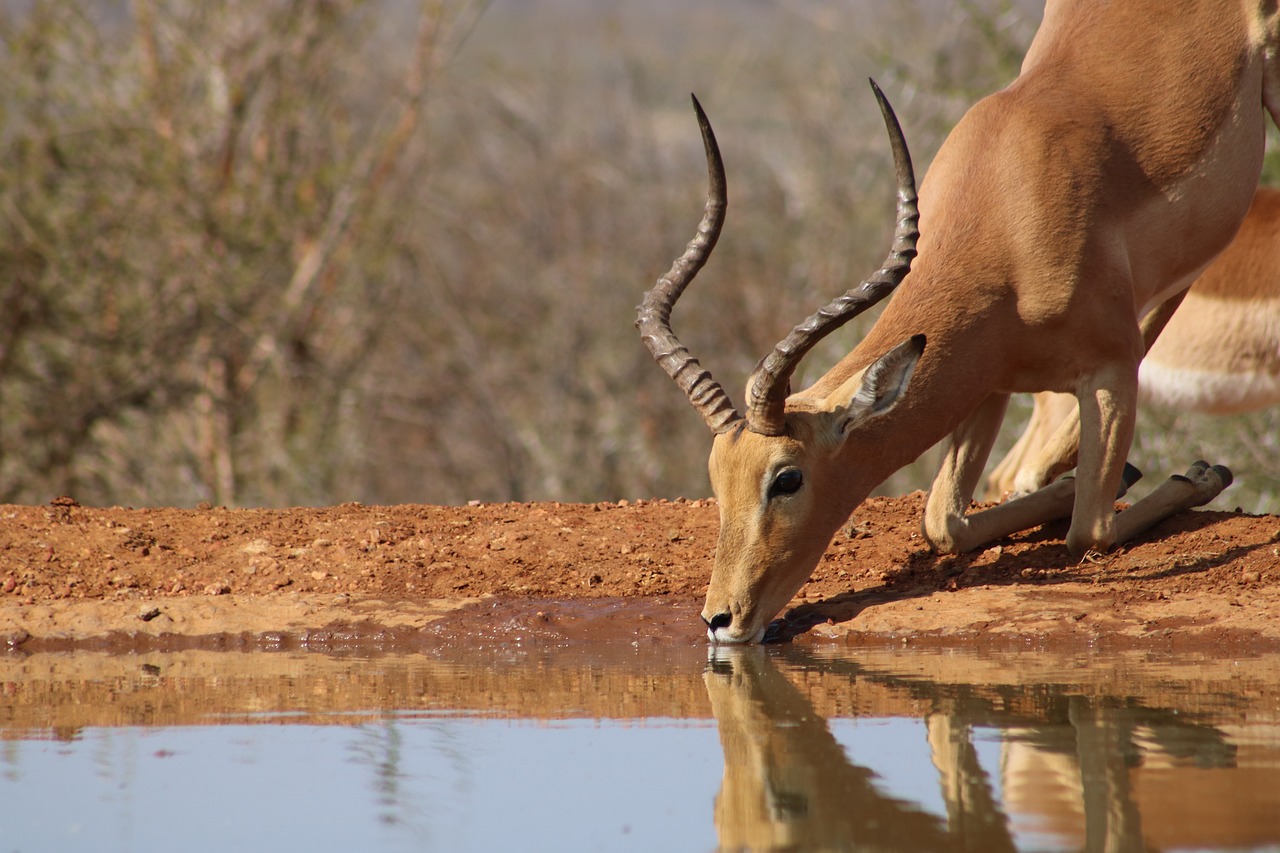
With its large, bulbous nose that looks more like a cartoon elephant’s trunk, the Saiga antelope is one of the most bizarre-looking mammals on the planet, according to National Geographic. This unique nose isn’t just for show—it acts as a built-in air filter, helping the saiga breathe in dusty environments and warm the freezing air in winter. These adaptations allow them to survive in the harsh, dry landscapes of Central Asia, where extreme weather conditions are the norm. Their populations have fluctuated drastically due to poaching and disease outbreaks, but conservationists are working hard to protect these ancient-looking creatures.
Ecologically, the saiga antelope is a keystone species, meaning it plays a critical role in maintaining the balance of its habitat. By grazing on vegetation, it helps prevent overgrowth and promotes plant diversity, keeping the ecosystem healthy. The saiga also serves as an important prey species for predators like wolves, ensuring a functional and balanced food chain. Despite its odd, almost comical appearance, this strange-looking antelope is one of nature’s most resilient and ecologically significant animals, proving that looks can be deceiving.
7. Proboscis Monkey: The Big-Nosed Jungle Acrobat
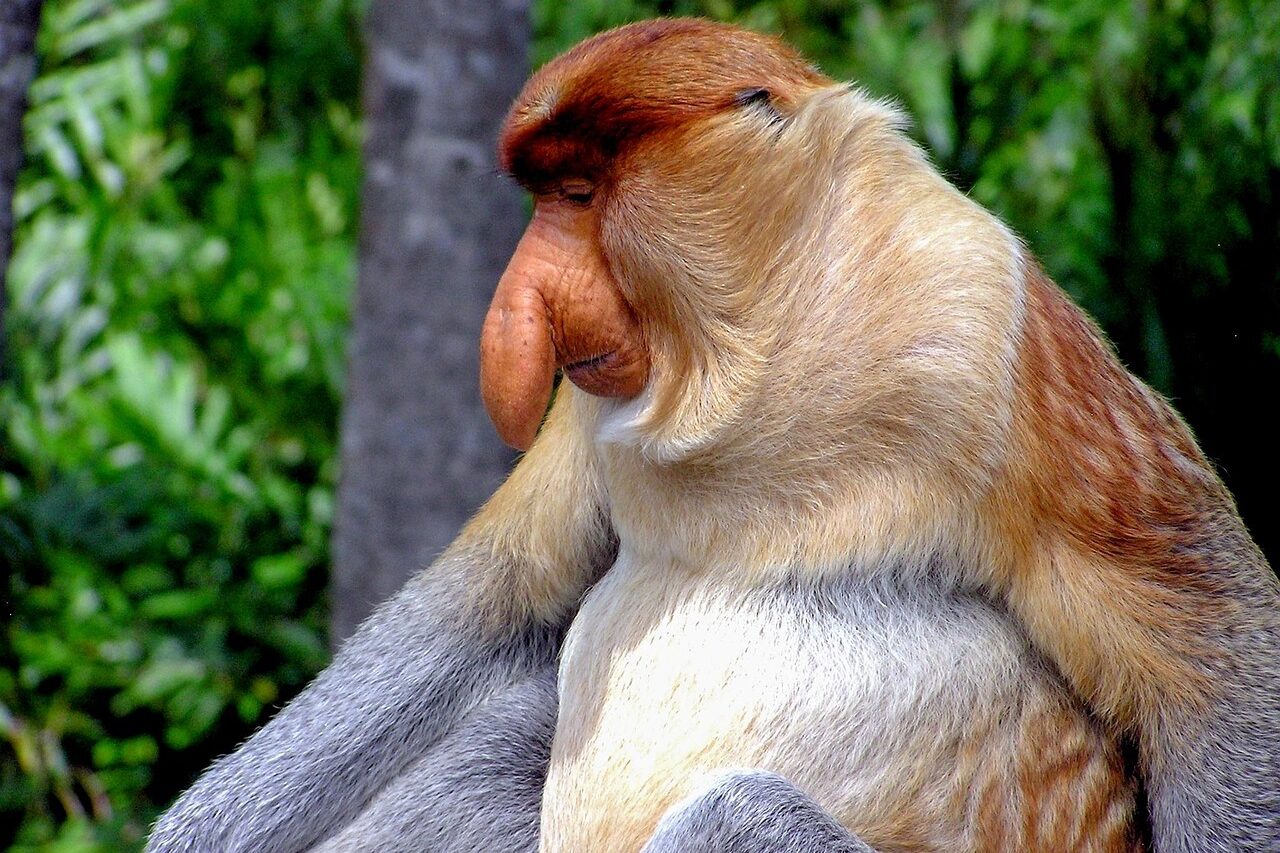
The proboscis monkey is famous for one thing: its massive, drooping nose that looks almost too exaggerated to be real, according to The Conversation. Males have particularly large noses, sometimes growing up to seven inches long, making them one of the most unusual-looking primates on Earth. While it may seem like an awkward facial feature, this oversized nose plays an important role in attracting mates. The bigger the nose, the deeper and more resonant the monkey’s calls, which helps intimidate rival males and impress females. Beyond their distinctive looks, proboscis monkeys are also exceptional swimmers, equipped with webbed feet that allow them to navigate the rivers and mangroves of Borneo with ease.
From an ecological standpoint, proboscis monkeys play a key role in maintaining the health of their forest environment. As fruit and leaf eaters, they help with seed dispersal, ensuring the regeneration of trees and plants. Their diet consists of various leaves that are difficult for other animals to digest, meaning they help control plant overgrowth and maintain forest diversity. They also serve as prey for large predators, keeping the food chain in balance. Sadly, deforestation and habitat loss have put these monkeys at risk, making conservation efforts essential. Their strange, long-nosed appearance may make them an easy target for jokes, but their role in the ecosystem is no laughing matter.
8. Dumbo Octopus: The Deep-Sea Flier That Keeps Ocean Life in Balance
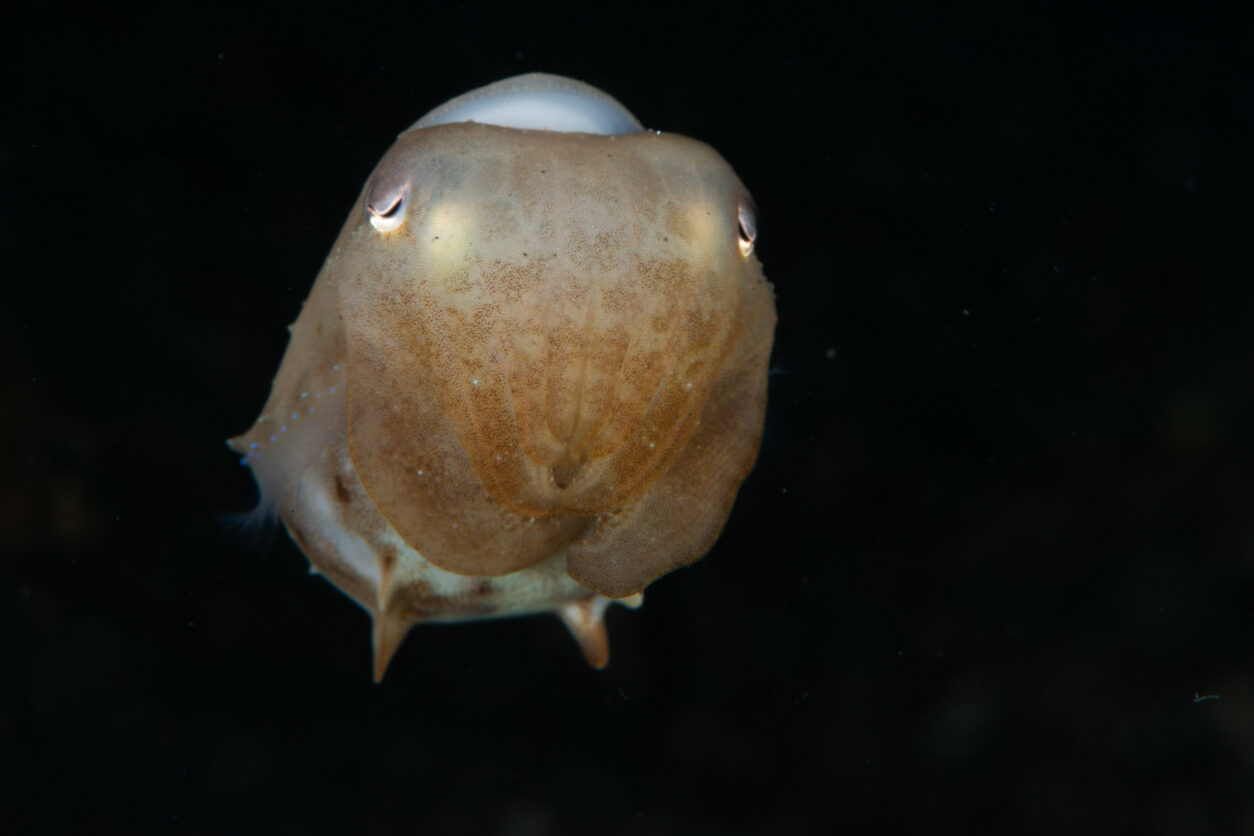
With its round, squishy body and ear-like fins, the dumbo octopus looks like a real-life cartoon character. Named after Disney’s famous flying elephant, this deep-sea cephalopod uses its flappy fins to glide gracefully through the ocean, resembling an underwater ballet dancer. Unlike most octopuses, dumbo octopuses don’t have ink sacs since they live at depths of up to 13,000 feet, where predators are scarce. Instead of hunting like traditional octopuses, they hover over the seafloor and pounce on small creatures, swallowing them whole. Despite their fragile, almost toy-like appearance, dumbo octopuses are highly adapted to surviving in extreme deep-sea conditions.
Their importance in the deep-sea ecosystem cannot be overstated. As predators, they help control populations of crustaceans, worms, and other invertebrates, preventing any one species from overrunning the ocean floor. Additionally, their presence indicates a healthy, stable deep-sea environment, as they rely on specific ecological conditions to survive. Studying dumbo octopuses also helps scientists understand deep-sea biodiversity and the effects of climate change on fragile marine ecosystems. Though they may look more like plush toys than powerful predators, these odd little octopuses are essential to keeping the deep ocean’s ecosystem in check.
Click here for more stories like this
9. Pangolin: The Armor-Plated Pest Controller
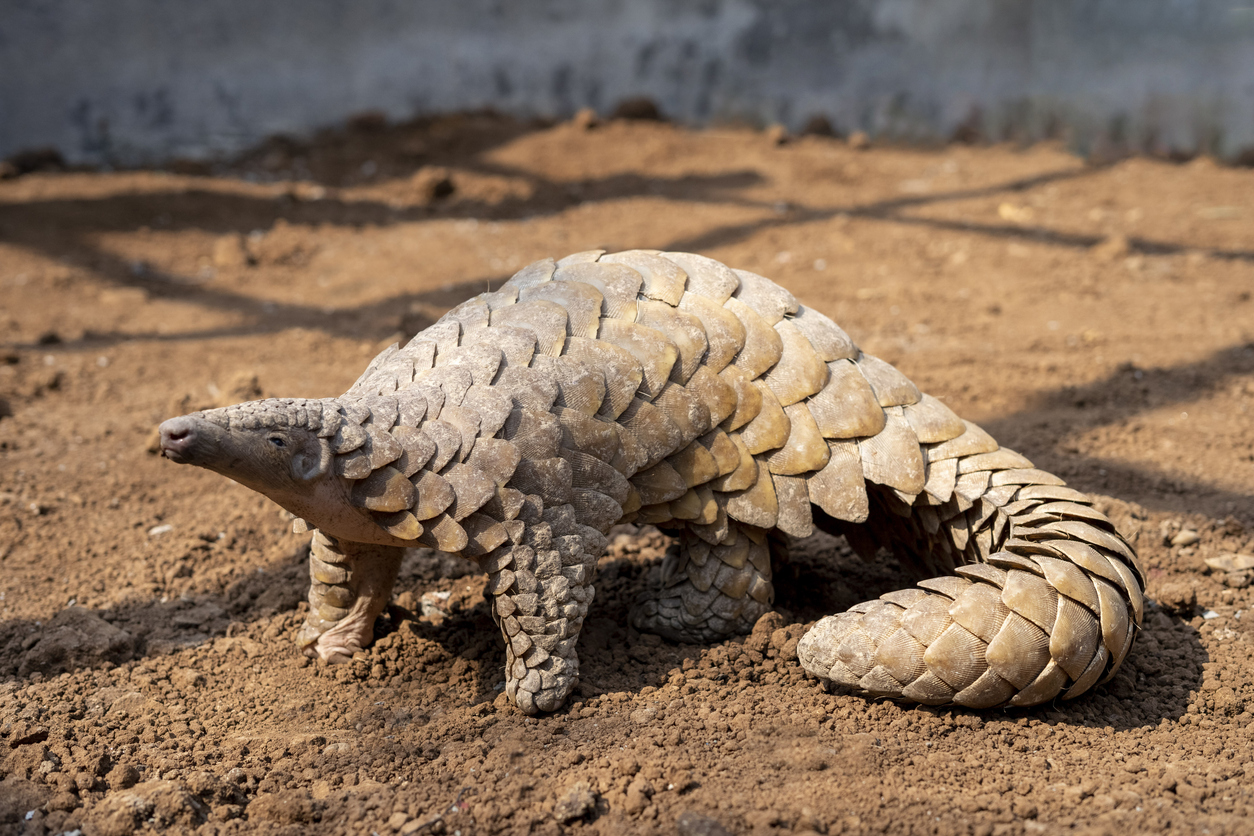
At first glance, the pangolin looks like a creature straight out of mythology, with its scaly body, long tongue, and unusual gait. It is the only mammal covered in keratin scales, which act as natural armor against predators. When threatened, pangolins curl into a tight, nearly impenetrable ball, making them one of the hardest prey animals to attack. But their real superpower lies in their diet—pangolins are voracious insect eaters, consuming up to 70 million ants and termites per year. Their long, sticky tongues can extend over a foot to reach deep into insect nests, making them nature’s most efficient pest controllers.
Pangolins play a vital role in maintaining insect populations, preventing termites from overwhelming ecosystems, and causing damage to forests. Their digging also aerates the soil, promoting plant growth and improving nutrient cycling. Unfortunately, pangolins are the most trafficked mammals in the world, targeted for their scales and meat, despite the fact that their scales have no real medicinal value. Conservationists are working hard to protect these unique creatures, as losing them would have devastating effects on insect population control and forest health. Despite their prehistoric, almost dragon-like appearance, pangolins are some of nature’s most important and irreplaceable species.
10. Red-Lipped Batfish: The Awkward Walker That Keeps the Reef Clean
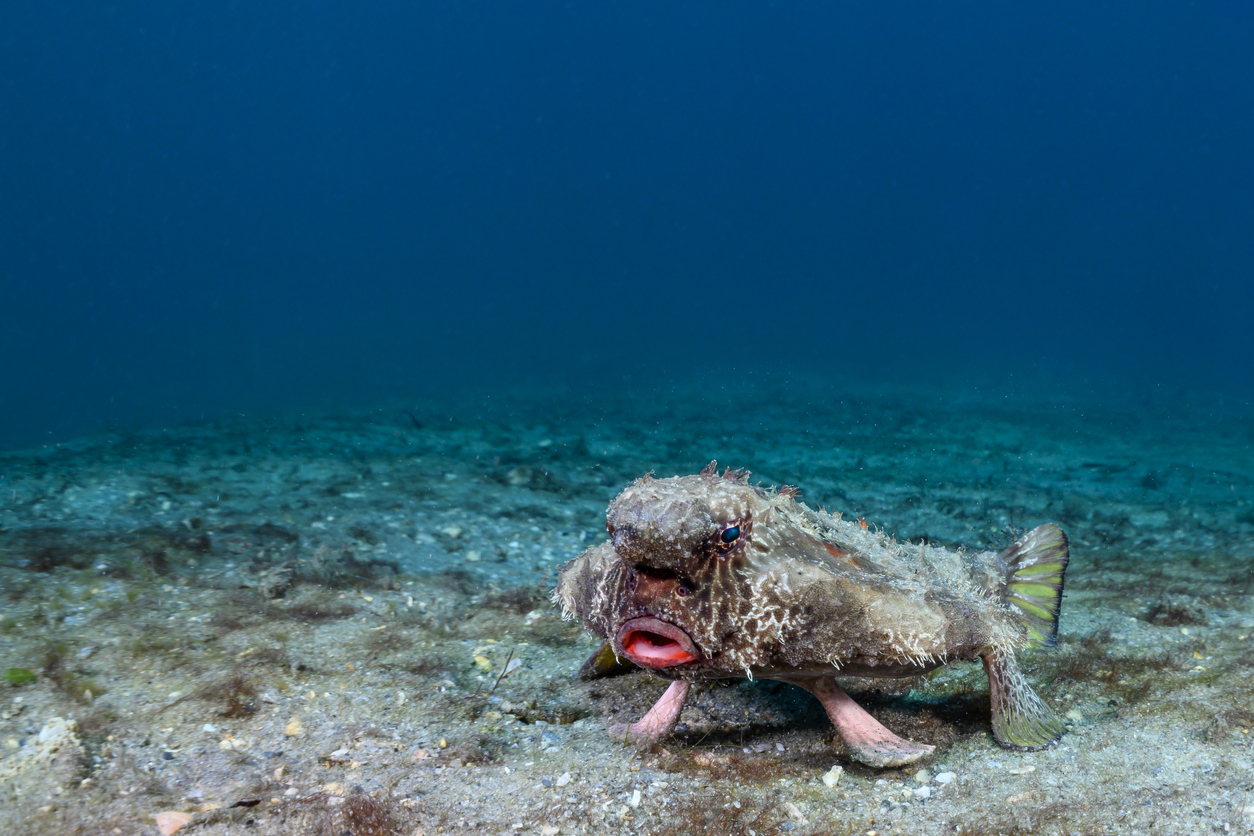
The red-lipped batfish is a fish that seems utterly confused about its own identity. Found near the Galápagos Islands, it has bright red lips, almost as if it applied too much lipstick, and instead of swimming gracefully, it walks along the seafloor on its adapted fins. Its flattened body and sluggish movements make it seem more like a walking pancake than a fish, but its odd appearance hides its important ecological role. Despite its strange looks, the red-lipped batfish is a skilled hunter, preying on small crustaceans and bottom-dwelling organisms that could otherwise disrupt the balance of reef ecosystems.
By feeding on these smaller marine creatures, batfish help control population growth in coral reef habitats, preventing certain species from becoming overabundant and damaging the environment. Their unusual walking behavior also disturbs sediment, helping nutrients circulate through the ocean floor and benefiting other marine life. Though they are rarely seen by humans, their existence is a crucial part of the delicate reef ecosystem. Their strange faces and clumsy movements may make them seem like an evolutionary mistake, but they serve a bigger purpose than meets the eye.
11. Leaf-Tailed Gecko: The Master of Disguise That Protects Forests
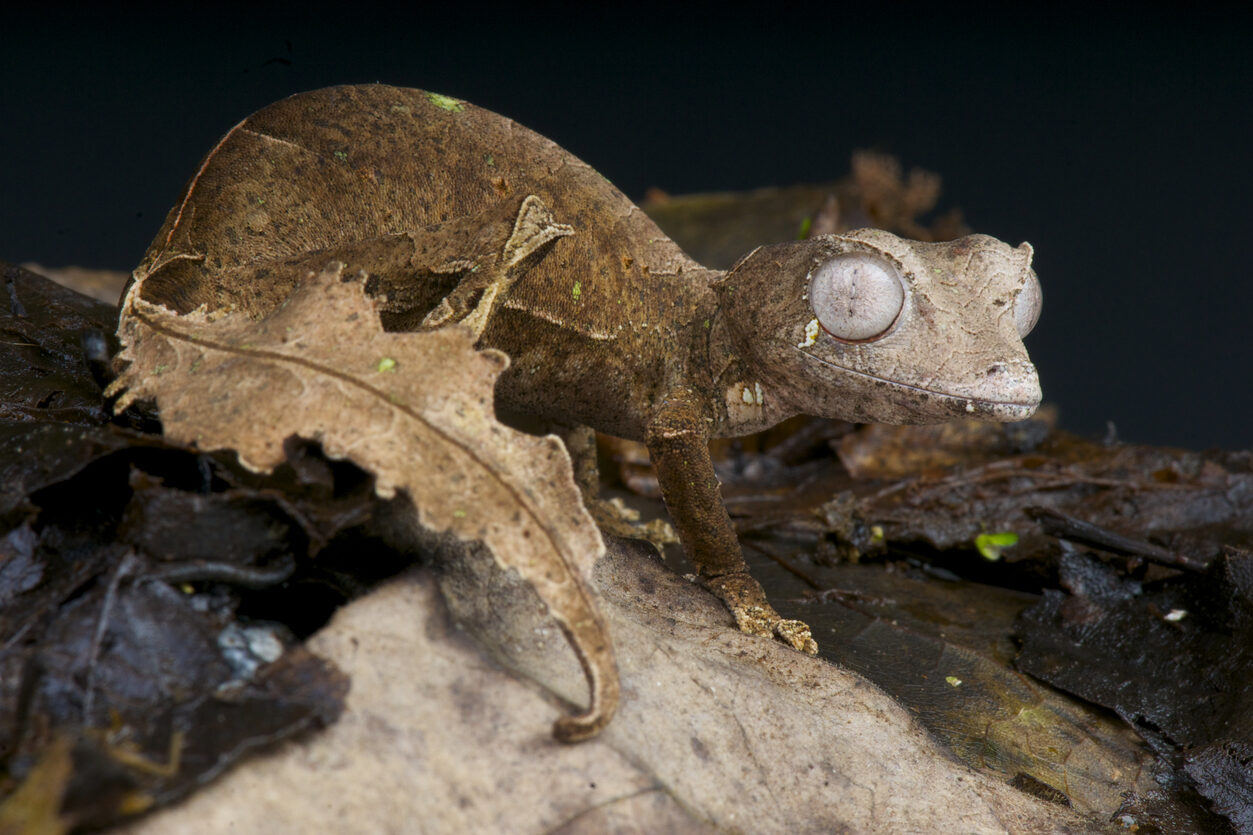
At first glance, you might mistake a leaf-tailed gecko for a dried-up leaf—and that’s exactly its intention. Native to Madagascar, this gecko has evolved perfect camouflage, with skin textures and patterns that resemble tree bark or dead leaves. When threatened, it can flatten its body against tree trunks, blend into its surroundings, and even change color. Its unique shape and camouflage help it avoid predators, making it one of nature’s most successful hiders.
But beyond just looking cool, the leaf-tailed gecko plays an essential role in controlling insect populations. These reptiles feed on various bugs, including mosquitoes, crickets, and cockroaches, preventing them from overwhelming the ecosystem. Their presence indicates a healthy, biodiverse forest, and since they rely on trees for survival, they also indirectly support conservation efforts by showing which forests are thriving. Their incredible disguise may make them hard to spot, but they are vital for keeping their ecosystems balanced and free from insect infestations.
12. Horseshoe Crab: The Ancient Healer of Modern Medicine
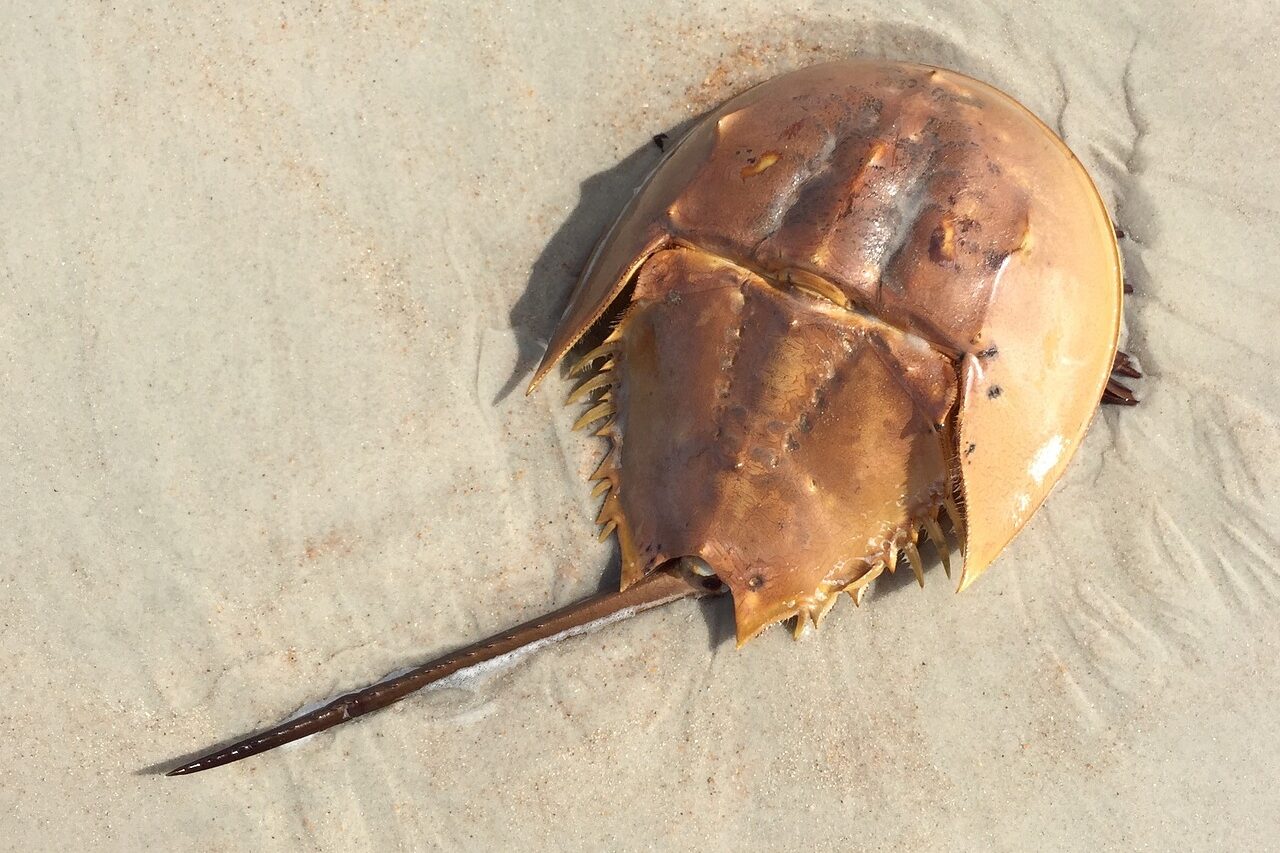
Horseshoe crabs may look like prehistoric armored tanks, but they’ve been around for over 450 million years, predating even dinosaurs. Their hard shells and strange blue blood make them stand out, but it’s this very blood that makes them invaluable to medical science. Horseshoe crab blood contains a special compound that can detect harmful bacterial toxins, making it crucial for testing vaccines, injectable drugs, and even surgical implants. Without this natural defense mechanism, modern medicine would lack a key tool in preventing contamination and infections.
Aside from their medical importance, horseshoe crabs also play a crucial role in coastal ecosystems. Their eggs are a major food source for migratory birds, helping sustain entire populations of shorebirds. Additionally, their burrowing behavior improves sediment aeration, benefiting marine life. Though they may look like relics from another time, these armored creatures are essential for both nature and human health.
13. Tarsier: The Wide-Eyed Predator That Keeps the Jungle in Balance
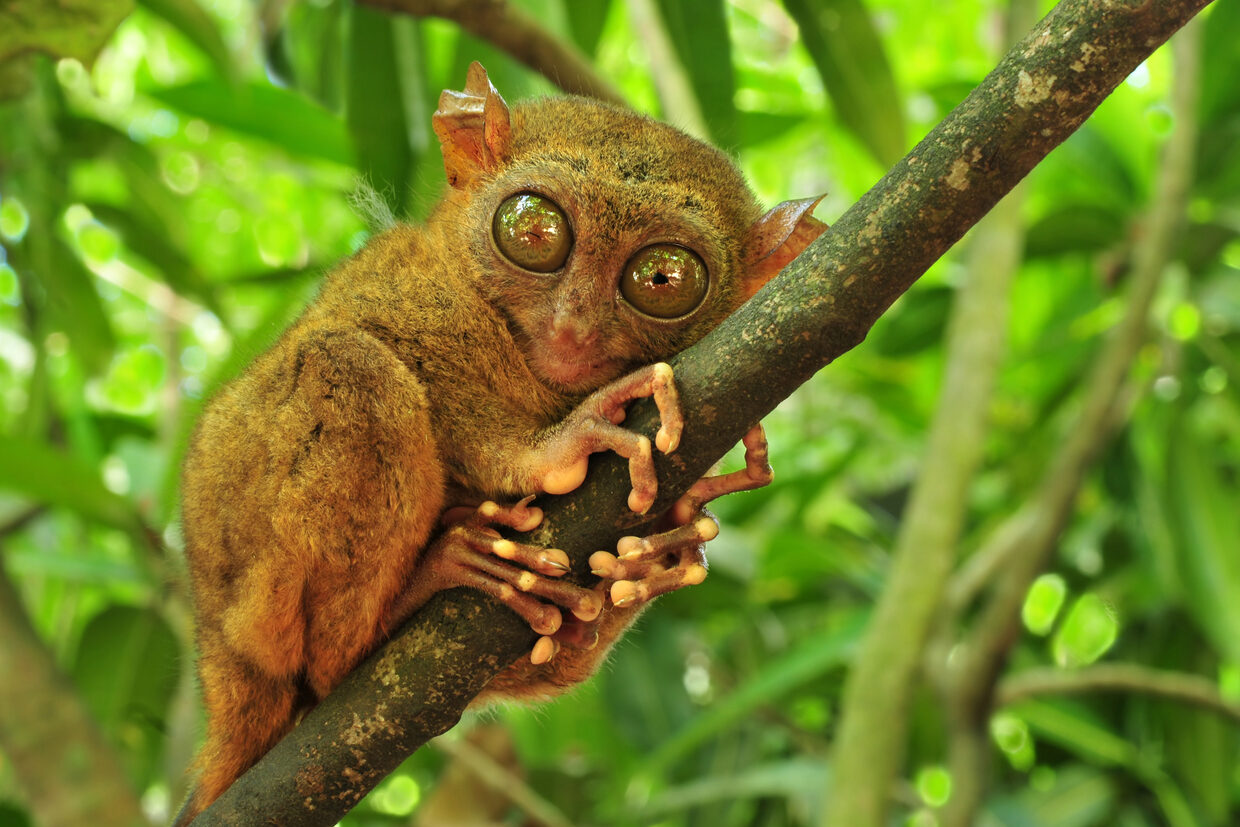
Tarsiers, with their huge, staring eyes and tiny bodies, look like they belong in a sci-fi movie rather than the real world. These nocturnal primates are known for their incredible ability to leap over 40 times their body length, allowing them to hunt insects with lightning speed. Their massive eyes help them see in near total darkness, making them excellent nighttime predators.
Tarsiers play a crucial role in controlling insect populations and preventing pests from overwhelming their forest homes. By feeding on bugs, reptiles, and even small birds, they help maintain the delicate balance of their ecosystem. Their presence is also an indicator of healthy forests, meaning conservation efforts to protect them benefit entire biodiversity hotspots.


